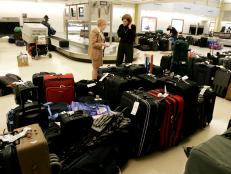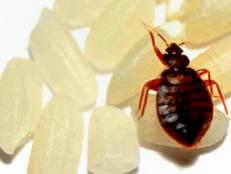10 Tips for Traveling With Diabetes
Some extra planning and research is all that's needed for a person with diabetes to enjoy an incredible family vacation.
View The Gallery
1 / 10
Know Before You Go
This includes visiting the doctor before the trip and researching doctors, pharmacies, and hospitals at your destination. The American Diabetes Association (ADA), the Mayo Clinic, the Centers for Disease Control and Prevention (CDC), and the Diabetes Research Institute Foundation all provide comprehensive travel information.
Plan Snacks and Meals in Advance
Holley Grainger, a registered dietitian and culinary nutrition expert, recommends bringing meals or snacks that are rich in fiber and protein, such as individual peanut butter packets with whole grain crackers, dried fruit and nuts, or string cheese. Conversely, depending on your destination, some of these items can also be found at airports and convenience stores. When eating out, Grainger says to be mindful of portion control, and choose meals that offer a balance of protein, fiber-rich carbs, healthy fat, and a vegetable. Beware of alcohol; the ADA has a tip sheet that covers specifics.
On international flights that include meals, request a diabetic meal in advance if possible, since Grainger says many airplane meals include too many carbohydrates.
On international flights that include meals, request a diabetic meal in advance if possible, since Grainger says many airplane meals include too many carbohydrates.
Pack Enough Medical Supplies
“Be over-prepared in case of every scenario that you can think of,” says Dr. Amber Champion, director of The Diabetes Center at Mercy Medical Center. For example, she recommends pump users bring a spare pump and an extra supply of basal (or long-acting) insulin. Other necessary supplies, depending on the type of diabetes, might include insulin, medication, rubbing alcohol, hand sanitizer, syringes, a blood glucose meter, and test strips. Be sure to pack these in a carry-on bag. A cooler for insulin is also necessary if traveling to the beach, an extremely hot destination, or for an extended period of time. Otherwise, Dr. Champion says insulin can last for 28 days at normal room temperature.
Know Airport and Flight Procedures
Allow extra time for going through security and customs at the airport; review the Transportation Security Administration (TSA) guidelines for special procedures beforehand concerning medications, liquids, supplies, and more. Dr. Champion says the TSA doesn’t typically question items like pumps or syringes, but they’re less common in some foreign countries, so it’s best to bring a doctor’s letter. It’s equally important to be aware of what’s allowed through customs at your destination; certain prescription medications are illegal in other countries, like Dubai. The ADA provides a comprehensive guide to air travel and diabetes, as does the CDC.
During the flight, the altitude change during the ascent and descent can affect some pumps. Dr. Champion advises disconnecting it during take-off and landing to prevent it from administering extra insulin. However, speak with a doctor about your personal situation beforehand.
During the flight, the altitude change during the ascent and descent can affect some pumps. Dr. Champion advises disconnecting it during take-off and landing to prevent it from administering extra insulin. However, speak with a doctor about your personal situation beforehand.
Be Alert for High and Low Blood Sugar Symptoms
Signs of hypoglycemia, or low blood sugar, can include nervousness, dizziness, and feeling shaky or light-headed. Grainger notes that symptoms can strike quickly and affect a person’s ability to think clearly, in which case the travel companion should carry glucose tablets as a quick fix. They’re easy to find at drugstores and supermarkets in the U.S., but carry extra when traveling abroad. Grainger notes that orange juice is a good backup too, and Dr. Champion says that small bags of candy such as Skittles or jelly beans are easy to carry and also work. For extreme hypoglycemia, a travel companion should know how to inject glucagon, a hormone that raises blood sugar. Dr. Champion recommends an app called Glucagon that walks you through the steps.
Signs of hyperglycemia, or high blood sugar, can include increased thirst, dry mouth, blurry vision, vomiting, shortness of breath, headache, and even stomach pain. Consult a doctor before a trip to discuss treatment options, which, depending on the severity, range from administering an extra dose of insulin to visiting an emergency room. Dr. Champion says to leave insulin injections to the paramedics.
Signs of hyperglycemia, or high blood sugar, can include increased thirst, dry mouth, blurry vision, vomiting, shortness of breath, headache, and even stomach pain. Consult a doctor before a trip to discuss treatment options, which, depending on the severity, range from administering an extra dose of insulin to visiting an emergency room. Dr. Champion says to leave insulin injections to the paramedics.
Make Sure Travel Insurance Includes Medical
Some travel insurance plans only cover financial losses. Check the U.S. Department of State for a list of recommended medical providers. Be sure to choose one that includes medical evacuation, or medevac, in case of an emergency; that option could be cost-prohibitive if insurance doesn’t cover it. It’s also important to research doctors and hospitals at your destination.
Adhere to a Regular Schedule
Both Grainger and Dr. Champion advise sticking to a regular schedule as much as possible, both with meals and insulin, especially when changing time zones. Those with Type 1 diabetes need to time insulin injections with meals, and injections need to be at set times. Eating at least every three to four hours can also help prevent any blood sugar dips.
Monitor Blood Sugar Levels Frequently
An increased activity level, time zone changes, and eating differently can all affect glucose levels. Stay on track by checking glucose levels more than normal. Travel companions shouldn’t be afraid to remind those with diabetes to check it, since it can be easy to forget while on vacation.
Wear a Medical Alert Bracelet
It’s reasonable to assume that someone with diabetes will have periods when they’re alone, if even for a few minutes. In the event of an emergency, such as a rapid onset of hypoglycemia, a medical alert bracelet can help paramedics quickly identify the problem. In addition, Dr. Champion advises that everyone with diabetes should carry a card with them at all times that includes a list of medications, their doctor’s name and number, and medical conditions.
Avoid Going Barefoot
Dr. Champion says this is especially true for patients with neuropathy, a condition that causes numbness in the feet, which poses an infection risk if they step on something and cut their foot without knowing it. However, Dr. Champion notes even those with Type 2 diabetes don’t always realize they have neuropathy. It’s best to err on the side of caution and always wear footwear, whether indoors or at the beach.






